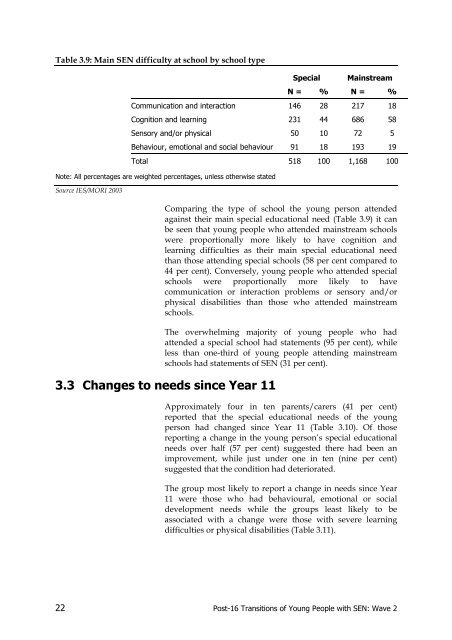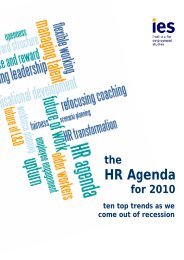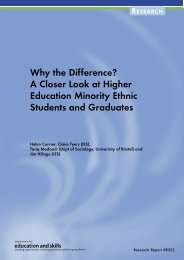Post-16 Transitions: a Longitudinal Study of Young People with ...
Post-16 Transitions: a Longitudinal Study of Young People with ...
Post-16 Transitions: a Longitudinal Study of Young People with ...
You also want an ePaper? Increase the reach of your titles
YUMPU automatically turns print PDFs into web optimized ePapers that Google loves.
Table 3.9: Main SEN difficulty at school by school type<br />
Comparing the type <strong>of</strong> school the young person attended<br />
against their main special educational need (Table 3.9) it can<br />
be seen that young people who attended mainstream schools<br />
were proportionally more likely to have cognition and<br />
learning difficulties as their main special educational need<br />
than those attending special schools (58 per cent compared to<br />
44 per cent). Conversely, young people who attended special<br />
schools were proportionally more likely to have<br />
communication or interaction problems or sensory and/or<br />
physical disabilities than those who attended mainstream<br />
schools.<br />
The overwhelming majority <strong>of</strong> young people who had<br />
attended a special school had statements (95 per cent), while<br />
less than one-third <strong>of</strong> young people attending mainstream<br />
schools had statements <strong>of</strong> SEN (31 per cent).<br />
3.3 Changes to needs since Year 11<br />
Special Mainstream<br />
N = % N = %<br />
Communication and interaction 146 28 217 18<br />
Cognition and learning 231 44 686 58<br />
Sensory and/or physical 50 10 72 5<br />
Behaviour, emotional and social behaviour 91 18 193 19<br />
Total 518 100 1,<strong>16</strong>8 100<br />
Note: All percentages are weighted percentages, unless otherwise stated<br />
Source IES/MORI 2003<br />
Approximately four in ten parents/carers (41 per cent)<br />
reported that the special educational needs <strong>of</strong> the young<br />
person had changed since Year 11 (Table 3.10). Of those<br />
reporting a change in the young person’s special educational<br />
needs over half (57 per cent) suggested there had been an<br />
improvement, while just under one in ten (nine per cent)<br />
suggested that the condition had deteriorated.<br />
The group most likely to report a change in needs since Year<br />
11 were those who had behavioural, emotional or social<br />
development needs while the groups least likely to be<br />
associated <strong>with</strong> a change were those <strong>with</strong> severe learning<br />
difficulties or physical disabilities (Table 3.11).<br />
22 <strong>Post</strong>-<strong>16</strong> <strong>Transitions</strong> <strong>of</strong> <strong>Young</strong> <strong>People</strong> <strong>with</strong> SEN: Wave 2

















